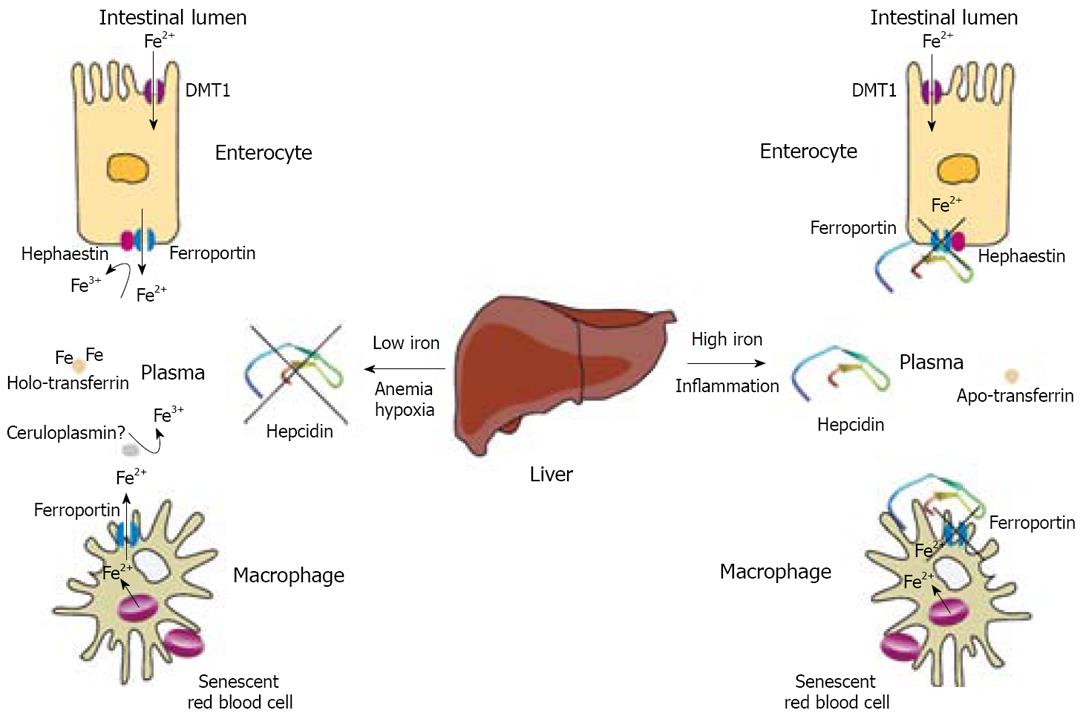Copyright
©2008 The WJG Press and Baishideng.
World J Gastroenterol. Dec 7, 2008; 14(45): 6893-6901
Published online Dec 7, 2008. doi: 10.3748/wjg.14.6893
Published online Dec 7, 2008. doi: 10.3748/wjg.14.6893
Figure 1 Regulation of iron efflux from enterocytes and macrophages by hepcidin.
Duodenal enterocytes absorb dietary iron via DMT1 and reticuloendothelial macrophages phagocytose iron-loaded senescent red blood cells. Both cell types release ferrous iron (Fe2+) into plasma via ferroportin, which is incorporated into transferrin following oxidation into the ferric form (Fe3+) via hephaestin or ceruloplasmin. The secretion of the iron-regulatory hormone hepcidin from the liver in response to high body iron stores or inflammatory signals results in internalization and degradation of ferroportin, and retention of iron within enterocytes and macrophages. A decrease in body iron stores, a requirement of iron for erythropoiesis, or hypoxia, inhibit hepcidin expression, permitting dietary iron absorption by enterocytes and iron release from macrophages.
- Citation: Pantopoulos K. Function of the hemochromatosis protein HFE: Lessons from animal models. World J Gastroenterol 2008; 14(45): 6893-6901
- URL: https://www.wjgnet.com/1007-9327/full/v14/i45/6893.htm
- DOI: https://dx.doi.org/10.3748/wjg.14.6893









